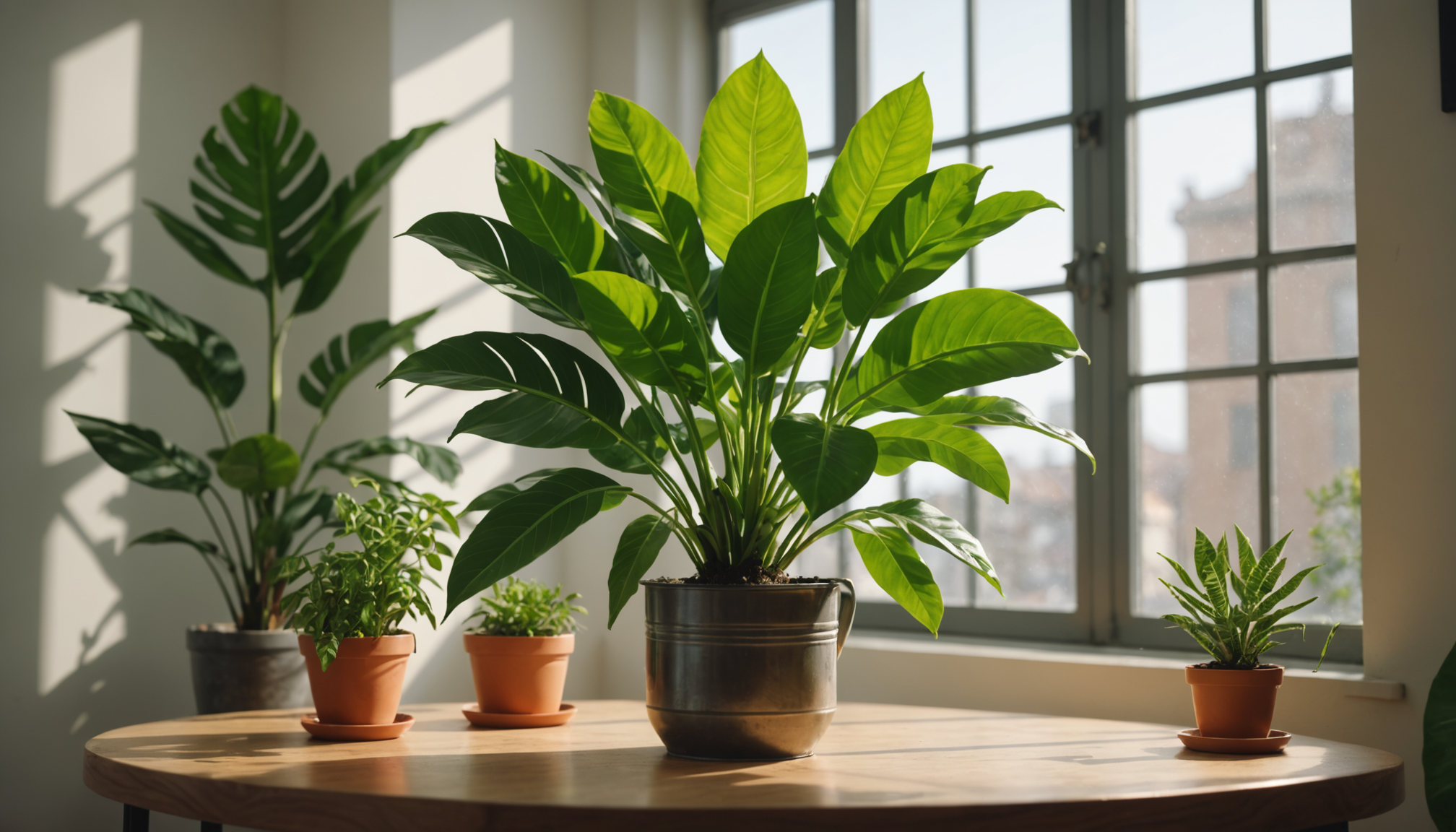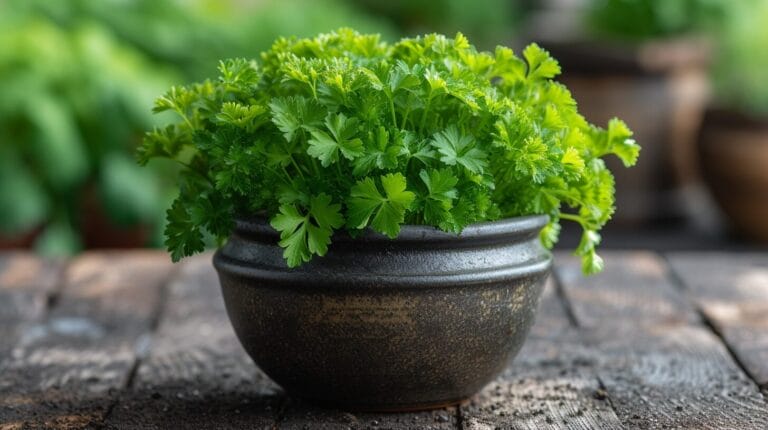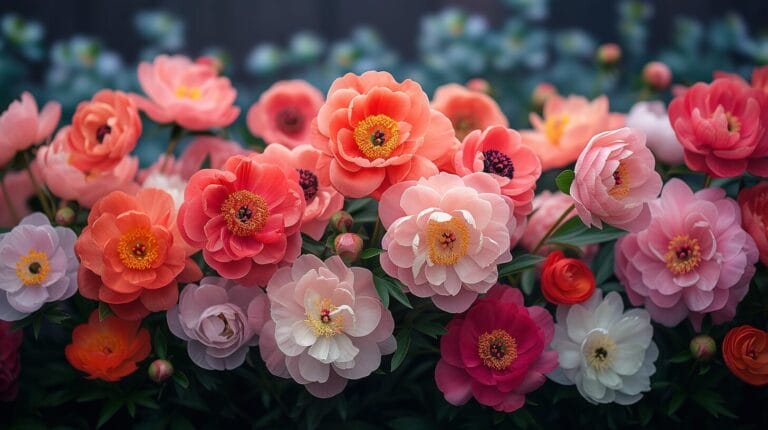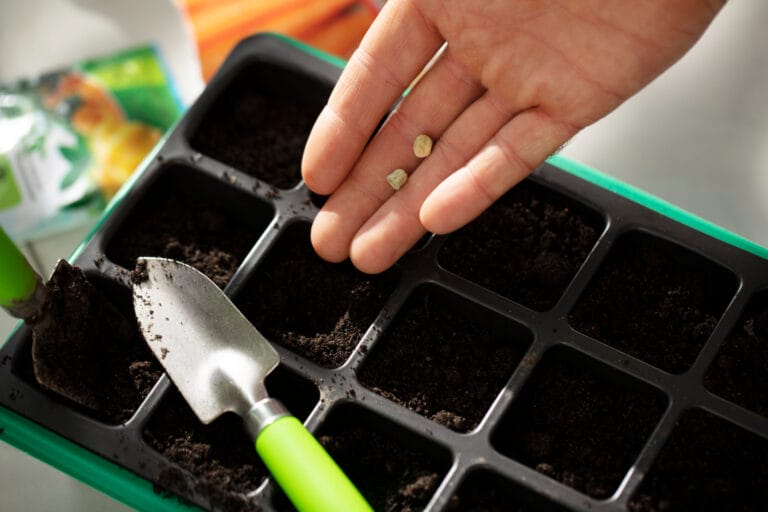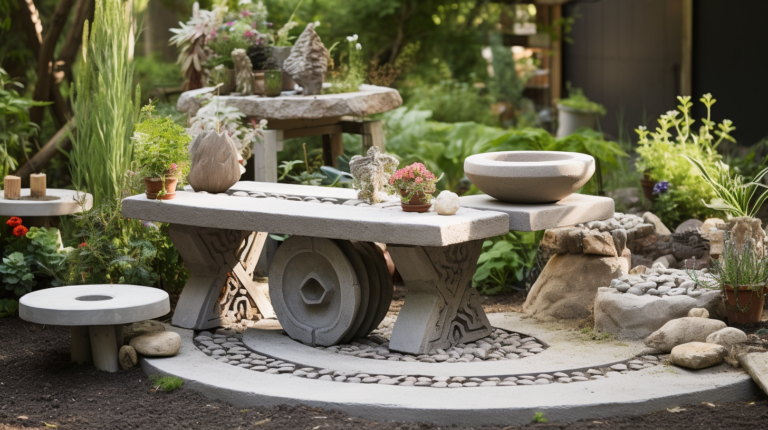Have you ever noticed your ZZ plant’s leaves starting to look a little sad and yellow? If so, you’re not alone! The phenomenon of ZZ plant leaves turning yellow can puzzle even the most dedicated plant lovers. Understanding why this happens is important because it could mean that your beloved plant needs some care to thrive! If you ignore this issue, you might end up with a plant that’s not just unhappy but could also face serious health problems.
In this article, we’ll explore the common reasons behind those yellowing leaves, including overwatering and nutrient deficiencies. Plus, we’ll share some easy tips to keep your ZZ plant healthy and vibrant! So, if you want to save your plant and ensure it stays green and happy, keep reading and discover how to bring those leaves back to life!
Understanding Why ZZ Plant Leaves Are Turning Yellow

ZZ plants develop yellow leaves for several key reasons. These hardy houseplants show distinct signs when their care needs adjustment. Learning to spot these signs helps prevent leaf problems and maintain healthy growth.
Common Reasons for Yellow Leaves
Five main factors cause ZZ plant leaves to turn yellow:
- Overwatering: Excess water leads to root rot in ZZ plants. The roots can’t absorb nutrients when sitting in wet soil, causing yellow leaves.
- Underwatering: While ZZ plants tolerate drought, too little water stresses the plant. The leaves turn yellow and dry when moisture runs low.
- Nutrient Issues: A lack of nitrogen shows up as yellow leaves. ZZ plants need basic nutrients to keep their deep green color.
- Pest Problems: Spider mites and mealybugs drain nutrients from ZZ plant leaves. These tiny pests cause yellow spots and general leaf decline.
- Environmental Stress: Poor light, extreme temperatures, or low humidity affect leaf health. ZZ plants prefer stable, moderate growing conditions.
How Overwatering Affects ZZ Plant Leaves
Root rot creates serious problems for ZZ plants. When roots stay wet, they turn black and mushy. This damage:
- Blocks nutrient flow to leaves
- Causes bottom leaves to yellow first
- Makes the plant wilt despite wet soil
- Creates soft, brown stems
Importance of Drainage for Healthy Leaves
Good drainage prevents most ZZ plant problems. Three essential drainage factors include:
- Well-draining potting mix that lets water flow through
- Containers with drainage holes at the bottom
- Space between soil particles for root oxygen
Proper drainage helps roots stay healthy and leaves stay green. The soil should feel slightly dry between waterings. This balance keeps ZZ plants thriving with minimal yellow leaves.
How to Identify If Your ZZ Plant Is Underwatered
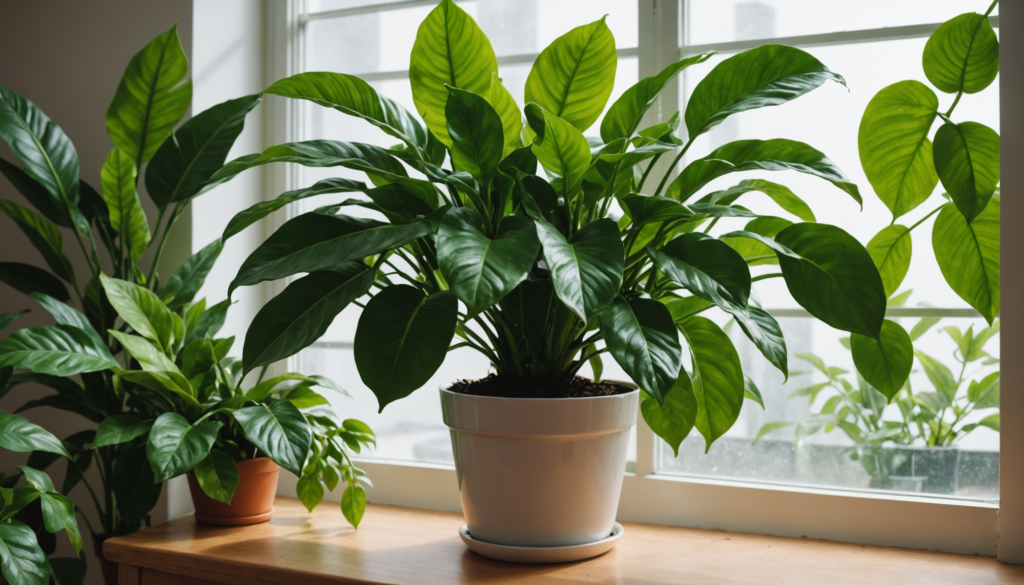
ZZ plants (Zamioculcas zamiifolia) display clear signs when they need water. Learning to spot these signals helps maintain healthy, vibrant leaves. This guide explains the key indicators of an underwatered ZZ plant and provides practical solutions.
Signs of Underwatered ZZ Plant Leaves
An underwatered ZZ plant shows several distinct symptoms:
- Yellowing leaves that start at the edges and move inward
- Drooping or limp leaves that lack firmness
- Dry, crumbly soil that pulls away from the pot edges
- Crispy leaf tips or brown edges
- Slower growth than normal
Regular plant checks help catch these signs early before damage occurs.
Balancing Watering for Optimal Leaf Health
ZZ plants need a consistent watering routine:
- Water every 2-3 weeks in normal conditions
- Allow soil to dry completely between waterings
- Increase watering during spring and summer growth
- Reduce water in winter when growth slows
- Check soil moisture with a finger test before watering
The plant’s environment affects its water needs. Bright light or warm temperatures may require more frequent watering.
Tips on How to Water a ZZ Plant Properly
Follow these steps for healthy ZZ plant watering:
- Use well-draining potting mix with perlite or sand
- Ensure pots have adequate drainage holes
- Water until it flows from drainage holes
- Empty excess water from saucers promptly
- Monitor leaf color and soil moisture weekly
- Adjust watering based on seasonal changes
The soil should feel dry about 2 inches deep before the next watering. This prevents both over and underwatering issues.
Nutrient Deficiencies Leading to Yellowing Leaves in ZZ Plants
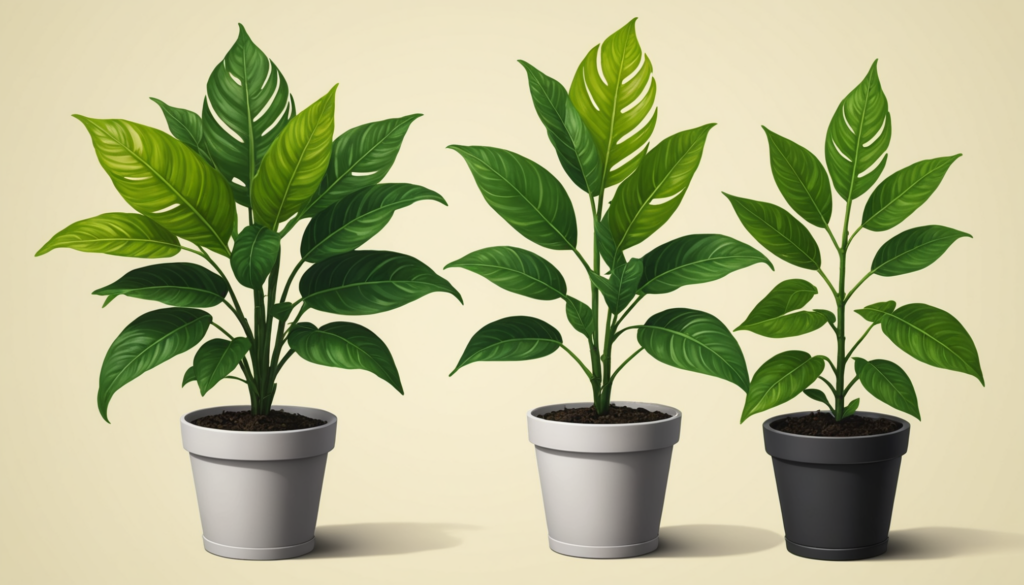
Yellowing leaves on ZZ plants often signal nutrient deficiencies. Understanding these deficiencies helps maintain healthy, vibrant plants through proper care and feeding.
Essential Nutrients for Vibrant Green Leaves
Three key nutrients keep ZZ plant leaves green and healthy:
- Nitrogen powers leaf growth and development. Low nitrogen causes leaves to turn yellow, starting with older growth.
- Phosphorus supports strong roots and flowering. Plants lacking phosphorus show slow growth and yellowing foliage.
- Potassium enables photosynthesis and other vital functions. A deficiency leads to yellow leaf edges and spots.
Identifying Nutrient Deficiencies in ZZ Plants
Watch for these early warning signs of nutrient problems:
- Yellowing starts in older leaves first
- Growth becomes stunted or stops
- Leaves drop more frequently than usual
- Leaf color appears uneven or mottled
Regular plant inspection helps catch deficiencies before serious damage occurs.
Remedies for Restoring Nutrient Balance
Take these steps to correct nutrient deficiencies:
- Apply a balanced houseplant fertilizer containing nitrogen, phosphorus, and potassium during the growing season
- Use well-draining potting soil that retains some moisture while preventing root rot
- Follow a consistent watering schedule – allow the top 2 inches of soil to dry between waterings
- Ensure proper drainage through pot holes and appropriate soil mix
ZZ plants bounce back well with proper care. Most yellowing leaves recover their green color within 2-3 weeks of correcting nutrient issues.
Pest Problems Affecting ZZ Plant Leaves

ZZ plants face several pest challenges that can cause yellowing leaves. Early detection and proper treatment help maintain the plant’s vibrant appearance and health.
Common Pests That Cause ZZ Plant Leaves to Turn Yellow
Three main pests affect ZZ plant health:
- Spider Mites: These tiny insects feed on leaf sap, creating yellow spots and leaf drop. Look for fine webbing between leaves as an early warning sign.
- Mealybugs: White, cotton-like clusters on leaves signal mealybug presence. These pests drain nutrients from the plant, leading to yellow patches.
- Scale Insects: These small, oval pests stick to stems and leaves. Their feeding habits cause yellowing and weaken the plant’s overall health.
Effective Pest Control Methods
Take action against pests using these proven methods:
- Insecticidal Soap: Spray affected areas directly. This solution kills pests while keeping the ZZ plant safe.
- Neem Oil: Apply this natural pesticide to combat multiple pest types. Mix with water and spray leaves every 7-14 days until pests disappear.
- Manual Removal: Wipe leaves with a damp cloth for small infestations. This simple method works well for early-stage pest problems.
Prevention Tips to Keep ZZ Plants Healthy
Follow these steps to prevent pest issues:
- Regular Inspection: Check leaves weekly for pest signs. Look under leaves and along stems where pests often hide.
- Smart Watering: Let soil dry between waterings. Wet conditions attract pests and stress the plant.
- Proper Environment: Place plants in areas with good air flow. Maintain moderate humidity and temperatures between 18°C to 26°C (64°F to 79°F).
Inspect plants weekly Water properly Maintain good ventilation.
Environmental Factors Affecting ZZ Plant Leaf Color
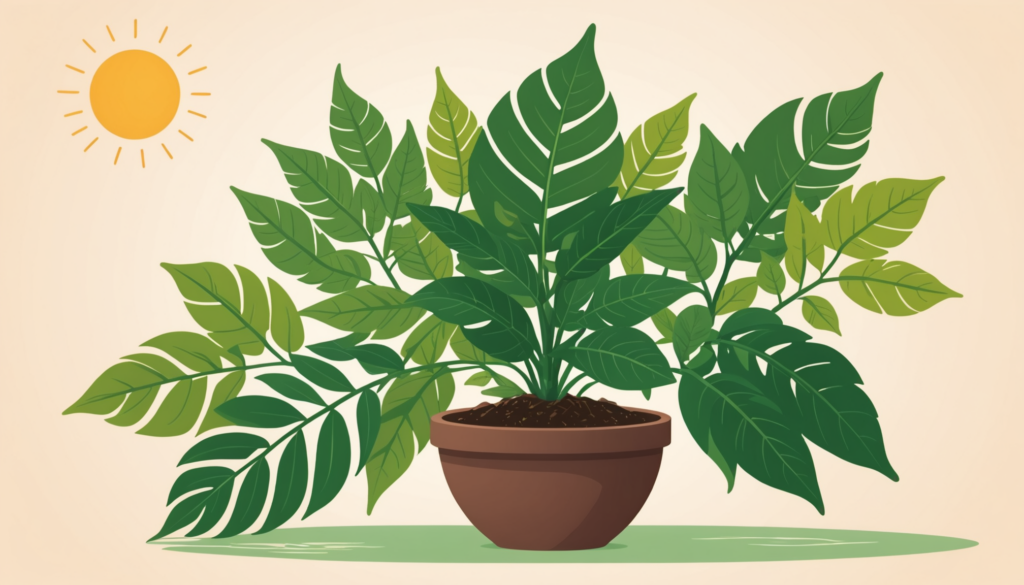
ZZ plants display vibrant green leaves when growing in proper conditions. Environmental factors play a key role in maintaining healthy leaf color and preventing yellowing.
Temperature and Humidity Effects
ZZ plants need specific temperature and humidity levels to thrive. The ideal temperature range falls between 18°C to 26°C (64°F to 79°F). Cold drafts or temperatures below 15°C (60°F) stress the plant, leading to yellow leaves.
Creating the Perfect Growing Environment
Proper humidity keeps leaves green and healthy. These plants prefer moderate moisture in the air. Low humidity causes leaf yellowing and drop. High humidity combined with poor drainage leads to root rot and yellow leaves.
Lighting makes a big difference in leaf health. Place ZZ plants in bright, indirect light. While they tolerate low light, too little light weakens the plant over time. A spot near a window with a sheer curtain works well.
Water only when the soil feels dry. ZZ plants store water in thick rhizomes, making them drought-resistant. Let the top 2-3 inches of soil dry between waterings. Too much water causes root rot and yellow leaves.
Seasonal Care Adjustments
ZZ plants grow slower in winter when light levels drop. Cut back on watering during cold months since plants use less moisture. Move plants away from cold windows and drafts. Extra light from grow lamps helps maintain leaf color in darker seasons.
Good air circulation prevents fungal issues but avoid direct heat or AC vents. Check soil moisture weekly and adjust watering based on seasonal needs. Proper seasonal care helps prevent stress-related leaf yellowing.
References:
- The Spruce – Growing ZZ Plants
- Gardening Know How – ZZ Plant Care Guide
Conclusion
In conclusion, understanding why your ZZ plant’s leaves are turning yellow is important for keeping it healthy. Overwatering and poor drainage are common reasons that can stress the plant and lead to yellowing leaves. It’s also essential to check for nutrient deficiencies, as well as pests like spider mites and mealybugs that can invade your plant.
By balancing your watering habits and creating a suitable environment, you can help your ZZ plant thrive and maintain its vibrant green color. So, keep an eye on your green friend, and don’t hesitate to explore more about caring for houseplants! Your journey into plant care can be exciting and rewarding!
FAQs
1. What makes ZZ plant leaves turn yellow?
Yellow leaves on ZZ plants stem from three main causes: overwatering, nutrient gaps, and pest problems. Root rot develops when soil stays too wet, blocking nutrient flow to leaves. Low nitrogen shows up as yellow leaves. Spider mites and mealybugs feed on leaves, causing yellow spots.
2. How can I spot an underwatered ZZ plant?
Look for drooping yellow leaves with crispy edges. The soil feels completely dry when touched one inch deep. ZZ plants store water in thick stems and roots, so they can handle some drought. Still, regular deep watering keeps leaves green and healthy.
3. What’s the right way to water ZZ plants?
Water ZZ plants when the top inch of soil feels dry. Pour water slowly until it runs from drainage holes, then empty the catch tray. Let soil dry between waterings to prevent root rot. A pot with good drainage helps roots stay healthy.
4. Which nutrients keep ZZ plants green?
ZZ plants need nitrogen, phosphorus, and potassium for bright green leaves. Feed with balanced houseplant fertilizer during spring and summer growth. Follow package directions carefully to avoid burning the roots. Skip feeding in fall and winter when growth slows.
5. How do I check for pests?
Check leaves weekly for tiny moving dots (spider mites) or white fuzzy spots (mealybugs). Look under leaves where pests often hide. Treat any signs of pests with insecticidal soap, spraying all leaf surfaces until problems clear up.

